
When foldable smartphones first hit the scene, OnePlus was pretty hesitant to adopt the technology, but four years later, it was worth the wait. The OnePlus Open is, without a doubt, the best foldable on the market today, as long as you can ignore its one big flaw.
The OnePlus Open is peak foldable hardware
The first thing you’ll experience with the OnePlus Open is its hardware, and that’s also the part of this device that makes it worth paying attention to. After learning from Oppo’s foldable hardware, especially in the Find N2, the OnePlus Open really brings peak foldable hardware to reality. It has a sturdy, reassuring hinge (that’s rated for a jaw-dropping 1,000,000 folds), a crease that’s barely there, and overall hardware that really just feels like what we’ve always envisioned for a foldable but never got from the likes of Samsung, Google, and other brands.
But, that comes as no surprise, given that OnePlus is just distributing a global version of the Oppo Find N3, which is practically identical outside of its fit and finish.
The hinge is the most impressive part. It still opens completely flat, unlike my Pixel Fold and Galaxy Z Fold 4, after a few weeks of wearing in, and the eagerness of the hinge to open up is so appreciated. I wish it were just a bit more “sticky” to pose into angles, as I find it a bit tough to lock into a standing position, but the trade-off is well worth it, in my opinion. And several weeks in, the crease is still as invisible as the day I opened it for the first time.
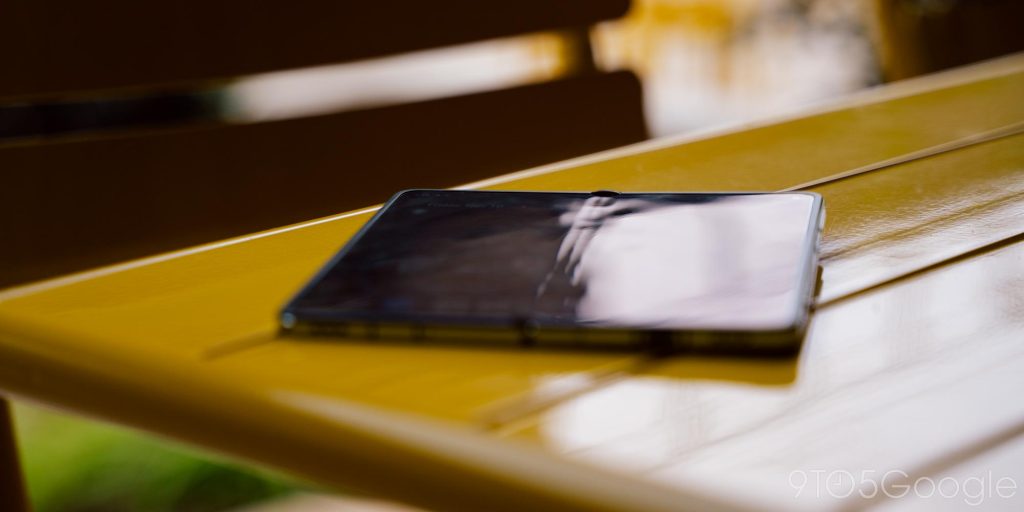
And it’s not like this is forcing you to trade off for a thicker, heavier foldable. The OnePlus Open is thinner than Samsung’s Galaxy Z Fold 5 by a good margin, as well as the Pixel Fold (though, I will say that Google’s design makes the Pixel feel thinner even though it isn’t). The weight is also cut way down from those devices, with the Open really just feeling like a normal phone in my pocket. There is one thing that undercuts the thickness, especially when the phone is closed, but we’ll get to that later.
Several weeks into using the OnePlus Open, the giddy joy of using a foldable this polished really has not worn off.
It’s just incredible how good this all is and how far ahead of the curve OnePlus and Oppo are compared to the brands they’re competing against. Of course, the story is different in China, where Oppo has some genuinely good competition from the likes of Honor, Xiaomi, and others, but in the US, where there are only three book-style foldables, OnePlus isn’t even playing the same game; it’s that far ahead.
This is what a foldable always should have been.
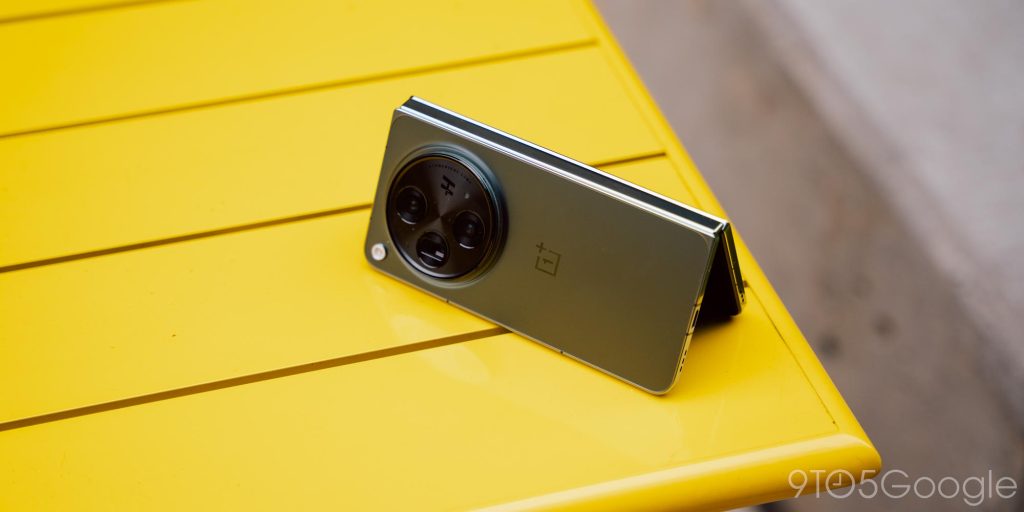
Of course, there is one big downside and that’s water resistance. Where Samsung and Google offer IPX8 water resistance, OnePlus only rates the Open for IPX4. That’s still plenty for a spill or being caught in the rain, but the Open is definitely a couple of notches behind here. As far as dust protection goes, there is no official rating, but the Open’s hinge has an adhesive layer inside that’s designed to catch dust before it can do any damage, and in my several weeks of use, I’ve had no problems.
Also worth noting is that OnePlus includes a free thin case in the box with the Open, shaded either green or black to match the foldable’s color. It’s a very good case overall and compliments the design well. The green model is matte glass, while the black has a grippier faux leather texture, but the case has a faux leather texture either way.
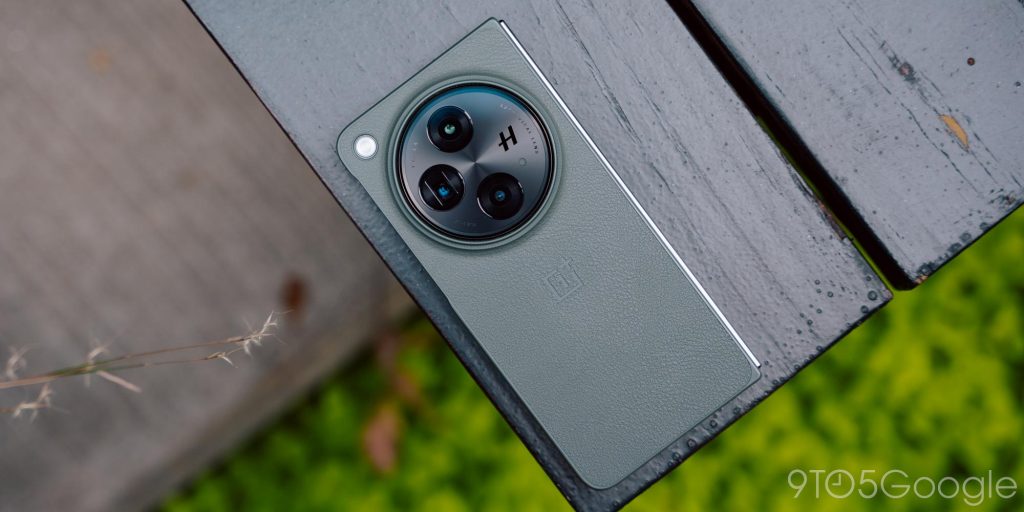

The first foldable without a display compromise
OnePlus really killed it here on the display situation.
Both the inner and outer displays are OLED panels that peak at 2,800 nits. They’re incredibly bright, good on colors, and just a pleasure to use. The wider 20:9 aspect ratio of the outer display is pretty much identical in use to a traditional smartphone and leaves the inner display with a near-square shape that’s slightly taller than it is wide.
Using that inner display is a joy, thanks to the crease, as mentioned previously, but it’s the little things that really help make this stand out. For instance, the screen protector over the ultrathin glass has a matte finish. This helps cut down on reflections while also better hiding the crease, and it feels good enough to where folks shouldn’t be compelled to take it off. (It isn’t supposed to be removed anyway.)
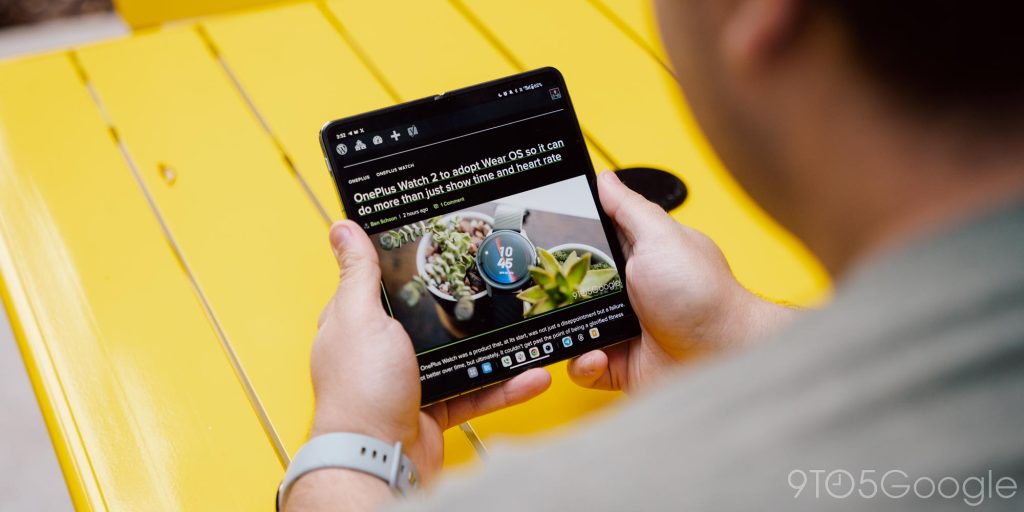
The aspect ratio also plays nicely with most apps. Some, like Gmail and YouTube, won’t trigger tablet UIs because the display is slightly taller than wide, but it works well on the whole. Plus, I’d happily trade a few tablet apps for a better typing experience. Because the Open isn’t super wide like the Pixel Fold, typing actually feels quite natural.
The outer display, meanwhile, just feels like a normal phone. Apps behave as expected, and aside from some apps not playing nice between the two screens (more on that later), it’s been a pretty smooth experience, unlike how it can be on Samsung’s tall and narrow design. Typing, too, feels very natural, but not quite as comfortable with two-thumb typing as the Pixel Fold.
OxygenOS is a mess, but ‘Open Canvas’ is incredible
Even though the hardware is nearly perfect, the biggest argument against the OnePlus Open is OxygenOS.
This Android skin started its life as a clean, near-stock version of Android that slowly added additional customization features. But, as time has gone on, the goal posts have shifted, and as of the past handful of releases, everything has been firmly planted in Oppo’s territory. While it’s still called “OxygenOS,” this is absolutely ColorOS in everything but name. The design, the choices, it all feels like something on a phone from China, and that’s because it is. It’s frustrating not just because OnePlus offered something so much better in the past but because OxygenOS is just so different from what we expect on smartphones sold in other parts of the globe. The core features still work as they should – you have the choice between button or gesture navigation, Android’s excellent handling of notifications, an app drawer, etc. But little quirks really add up over time, like the inability to open an app’s info page from the multitasking screen, the fact that apps starting with a number are at the bottom of the app drawer instead of the top, the Quick Settings preview taking up half of the display (both outside and in), and so on.
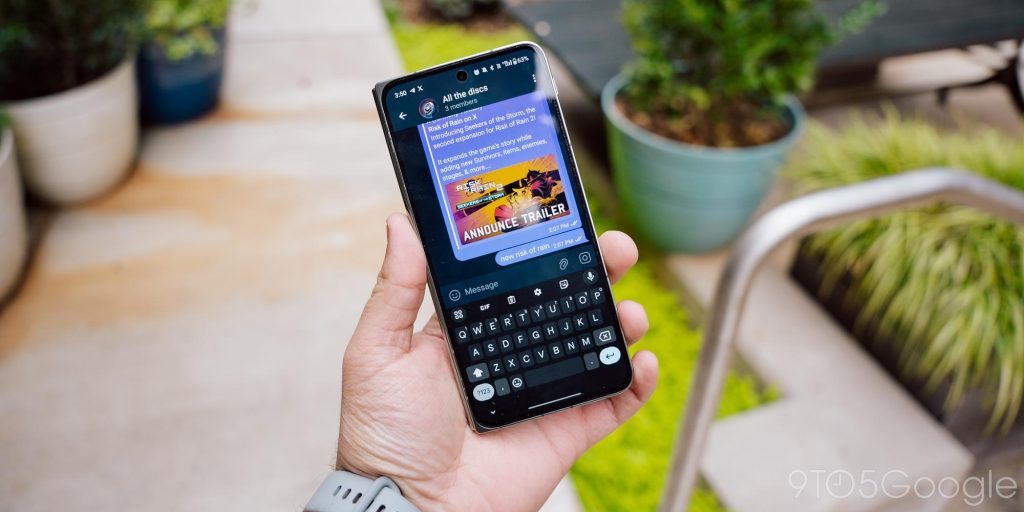
On top of that, OxygenOS on the OnePlus Open is still quite buggy when it comes to handling apps on the inside and outside. AccuWeather, as one example, will force itself into a landscape view on the inner display and keep that view if you close the screen and open it on the outer display. Telegram is even more of a mess, with the single-pane outer display layout often continuing when you open the device, which leads to various parts of the app just not working until you close and reopen it.
The taskbar, which I’m grateful to have, also sits on top of the text box in Telegram on the inner screen. I’ve also often had Gboard sit in its tablet layout on the outer display and its phone layout on the inner display. These are all bugs I have never run across on the Pixel Fold or Galaxy Z Fold series. And, these bugs are also a big part of the reason our OnePlus Open review is coming a few weeks after other outlets, as OnePlus pushed a bug-fixing update to the device just three days prior to the October 19 review embargo. And while it did fix a lot of our early issues, there are still plenty of issues in day-to-day use throughout the software here.
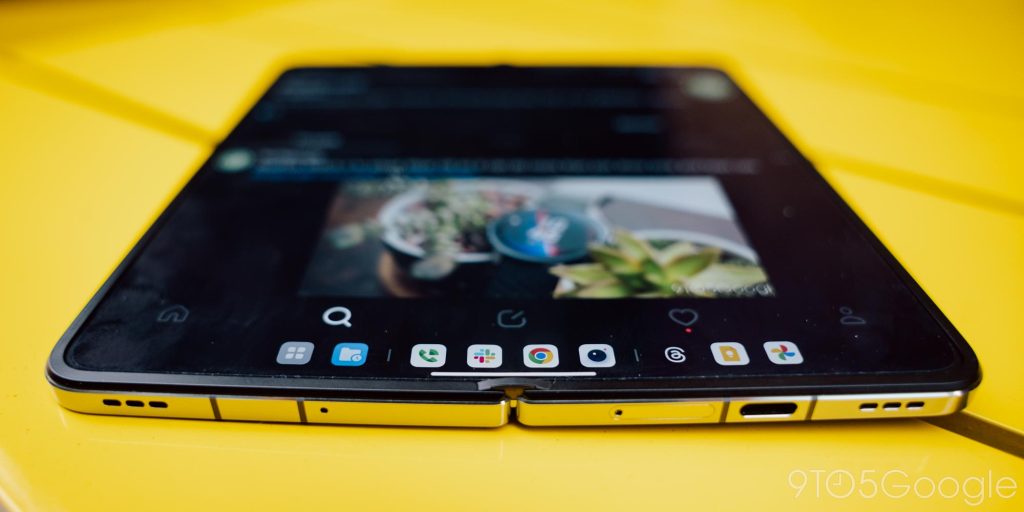
On top of bugs, there are also just random dumb decisions in the software here. The homescreen, for instance, forces you into a 4×6 layout that cannot be changed. This works all right between the two screens, as your outer homescreen just expands to two panes when the phone is opened (like the Pixel Fold), but as someone who has run a five-wide homescreen layout for years, it’s infuriating that I literally don’t have the choice on this phone – and for seemingly no reason.
And all of that really paints the picture of the current state of software with OnePlus. Issues go on for a while, updates are not very frequent – the OnePlus Open is promised four major Android updates and five years of bimonthly security updates – OTAs are sometimes very inconsistent, and there are just frustrating choices throughout that go against what every other Android phone offers. OxygenOS is the main reason I stopped using the OnePlus 11 earlier this year and why I’ve not really been attracted to many OnePlus devices over the past few years. And that’s not something you should expect to change now that the company is putting out a $1,700 foldable. OxygenOS 14, based on Android 14, which will come to the Open eventually (it’s currently on Android 13), looks like a lot more of everything we dislike about OnePlus’ software.
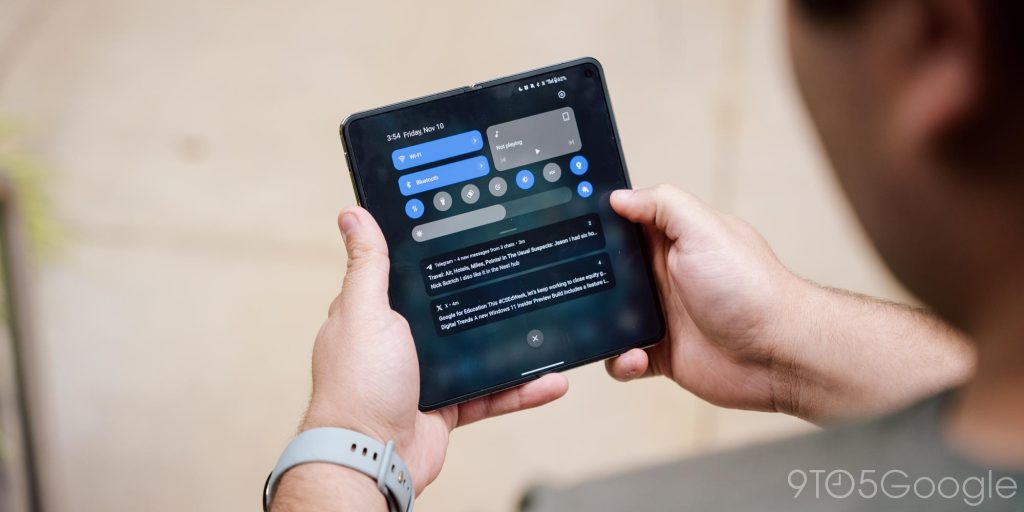
Yet, OxygenOS hasn’t been enough to fully deter me from using the OnePlus Open, in part because of the hardware but also because it has one redeeming quality in “Open Canvas.”
Also set to come to the OnePlus Pad later on, “Open Canvas” is a unique, jaw-droppingly good multitasking system that Oppo and OnePlus have conceived. The video below shows this feature better than I can describe it, but the short version is that using multiple apps on the OnePlus Open is better than on literally any other mobile device I’ve used. Ever.
The beauty of Open Canvas is just in how fluid it is. Moving between apps is fast and feels natural in a way I never ever expected and in a way that actually makes it useful. Samsung’s One UI has been able to run three apps for a while, but Open Canvas’ ability to have two apps taking up the screen and a third just a tap or swipe away without touching any app icons or visiting the homescreen is just incredible.
And beyond that, this is also the first multitasking system that feels like it actually works on a foldable screen. The idea of a tablet in your pocket is the dream of these book-style foldables, but that starts to fall apart when apps need more space than the screen provides. Open Canvas effectively expands that screen beyond the constraints of the hardware.
Open Canvas is, without a doubt, the best thing to come out of this foldable, and it’s something I hope Google is watching. Android needs to adopt this concept natively because it’s better than anything we have today.
OnePlus should be proud of this feature. It’s just such a shame that it’s surrounded by a load of awful software.
This is the best camera OnePlus has ever made
On the back of the OnePlus Open, you’ll find a huge camera module. The circular module juts out of the back of the device and takes up over a third of the total design. This is the first time I’ve been put off by the physical size of a camera on a smartphone, as it genuinely makes holding the device uncomfortable and doesn’t really look all that nice, either.
But it’s totally worth it.
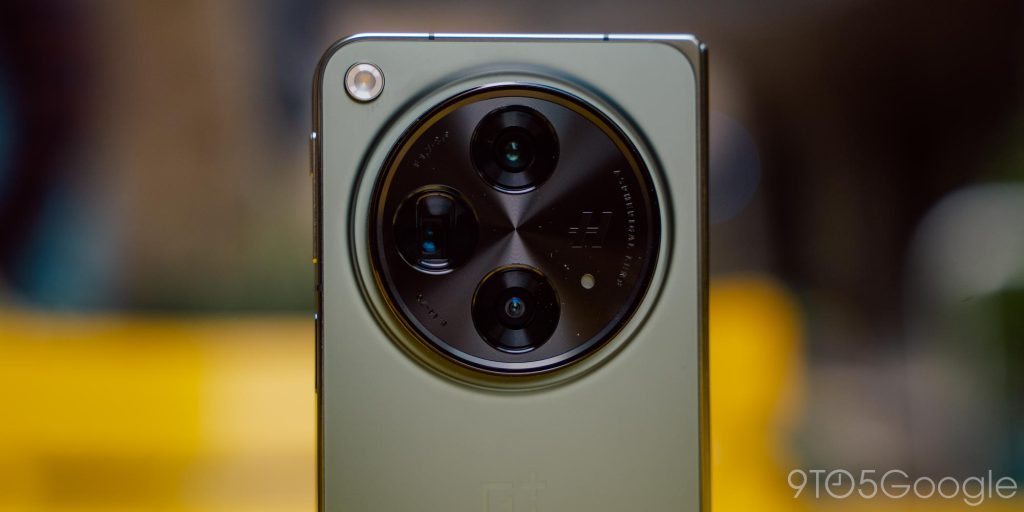
Within the honking camera module is a trio of cameras. The primary sensor is a 48 MP “stacked” camera from Sony Lytia, and it’s genuinely stunning. Shots from this camera feel incredibly natural without much HDR needed to get a great shot. Processing feels minimal, which can either make or break a shot, but I’m pretty consistently impressed here. Things start to get less consistent in low-light conditions, but even then, I’m often blown away by each shot.
OnePlus would still need to improve on consistency to get on the level of a Pixel or iPhone, but based on my experience with Samsung over the past couple of years, OnePlus has taken the #2 slot in the Android camera space as far as I’m concerned.
And the secondary lenses only back that up. The 48 MP ultrawide is very good, if pretty standard, and – finally – OnePlus has debuted a periscope zoom lens. The 64 MP camera has a 3x optical zoom lens that leads to very good zoom at both 3x and 6x too.




Up to around 10x, the shots are rather decent, but it does start to fall apart the further you go in. OnePlus really put out a big bet by including up to 120x hybrid zoom. However, the quality is often laughable once you hit triple digits, and the stabilization makes it quite difficult to lock in on a subject. But still, it’s way better than just sticking with another traditional zoom lens, and this well beats the Galaxy Z Fold 5 while giving the Pixel Fold a run for its money.
It’s the best camera OnePlus has made and is more than good enough for a daily driver.
Battery life is good, but the lack of wireless charging isn’t
Another area where many book-style foldables have struggled is in battery life, but the OnePlus Open is fairly solid here.
The 4,805 mAh battery inside is bigger than Samsung offers and on par with Google but leads to battery life that neither competitor can match. I’m regularly going to bed after 4-5 hours of screen time with 40% or more left in the tank. On my heaviest days, I was getting around 7 hours of active use with about 20% left by bed. Put simply, it’s impressive and a breath of fresh air compared to most foldables. I suspect this comes down in large part to OnePlus’ aggressive killing of background apps (you’ll also get near-constant notifications about apps that are using up battery life), but it’s still very good regardless.
Also good is the wired charging situation, which hits 67 W and is the fastest on a foldable sold Stateside. But the included charger has a USB-A connection, which is quite ridiculous in 2023.
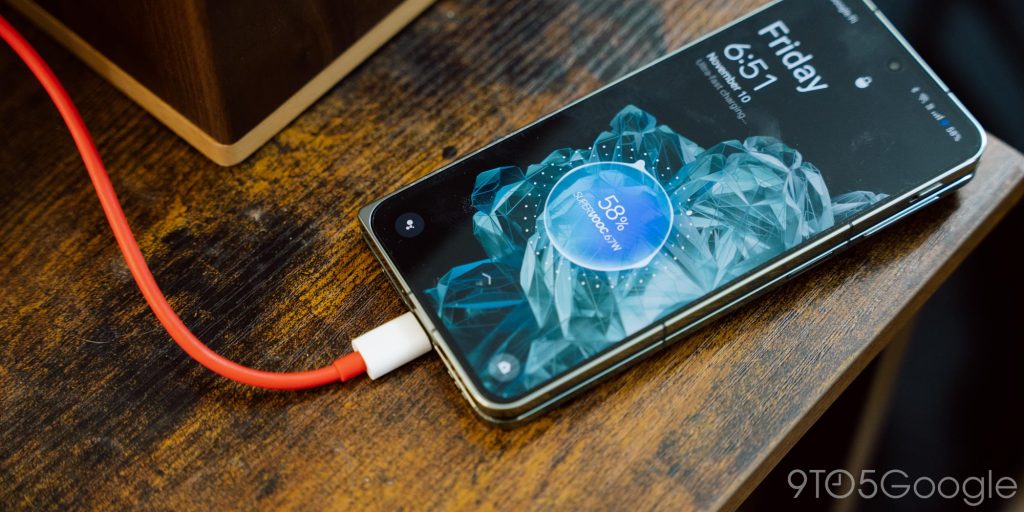
What’s not good is the lack of wireless charging, which is an absolute must in a device at this price point. Some will be quick to say, “But fast charging is better,” and such, but these features are not mutually exclusive. OnePlus itself has proven that fast wireless charging exists and is great. There are decent arguments for why this device shouldn’t have wireless charging, like the sheer size of the camera module, but overall, I’m just tired of OnePlus making excuses around this feature. Wireless charging is not optional in a $1,700 smartphone, and no one should act like it is.
The price is right on paper, but not in reality
Pricing is one of the areas in which OnePlus has long excelled, generally undercutting Samsung, Google, and Apple by a considerable margin. And, with a book-style foldable, undercutting that price should be rather easy, given Samsung and Google both want $1,799 for their respective foldables.
Yet, the OnePlus Open only drops the price by $100, down to $1,699.
That price is, on paper, good. As we’ve gone over in this review, the OnePlus Open is a genuinely excellent foldable across the board and is better than Samsung and Google’s offerings in meaningful ways. But, OnePlus’ current model of only selling its phones unlocked in the US market means that most customers are probably not even going to know this phone exists because that’s just how this market works.
US customers, as well as many in other markets, buy phones through their carrier. So a $100 price difference won’t be worth the hassle of dealing with alternate financing or an outright purchase. If the Open were $1,499 or $1,399, it’d be a slightly different story. That’s a meaningful enough difference to where a good number of customers might be willing to buy outside of their carrier, but that’s just not what we got. The Open works on all US carriers just fine (my testing was on Google Fi), but it can only be purchased unlocked.

And it’s weird we didn’t get that lower price, given the $200 minimum trade-in discount that will be available for the life of the OnePlus Open. That brings the cost down to $1,499, where it should probably be anyway. It’s a small hurdle and great for anyone who does plan to buy, but this trade-in deal means OnePlus sits in a weird spot with its price, which will hurt the device in the long run.
Final thoughts
The past several weeks with the OnePlus Open have really ruined me for other foldable devices. It’s really that good. The hardware is near-perfect, the camera is good enough to be the only one in my pocket, and the software, while overall not great, has enough redeeming qualities to let the Open stick the landing.
The OnePlus Open has taken the place of my Pixel Fold and Galaxy Z Fold 4, and I really don’t see myself returning to them anytime soon. I much prefer Google’s software. I much prefer Samsung’s accessories. But, at the end of the day, OnePlus has created a foldable that is nearly no compromise and has done so to an extent far closer than anyone else has managed.
OnePlus Open is available now from OnePlus.com, Best Buy (which is $300 off with carrier activation), and Amazon for $1,699, and it deserves your attention.
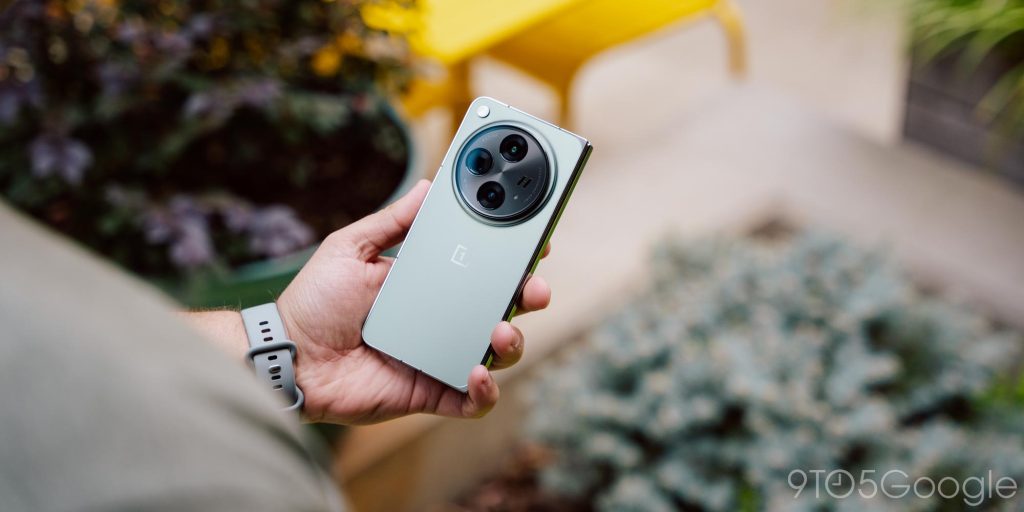
FTC: We use income earning auto affiliate links. More.













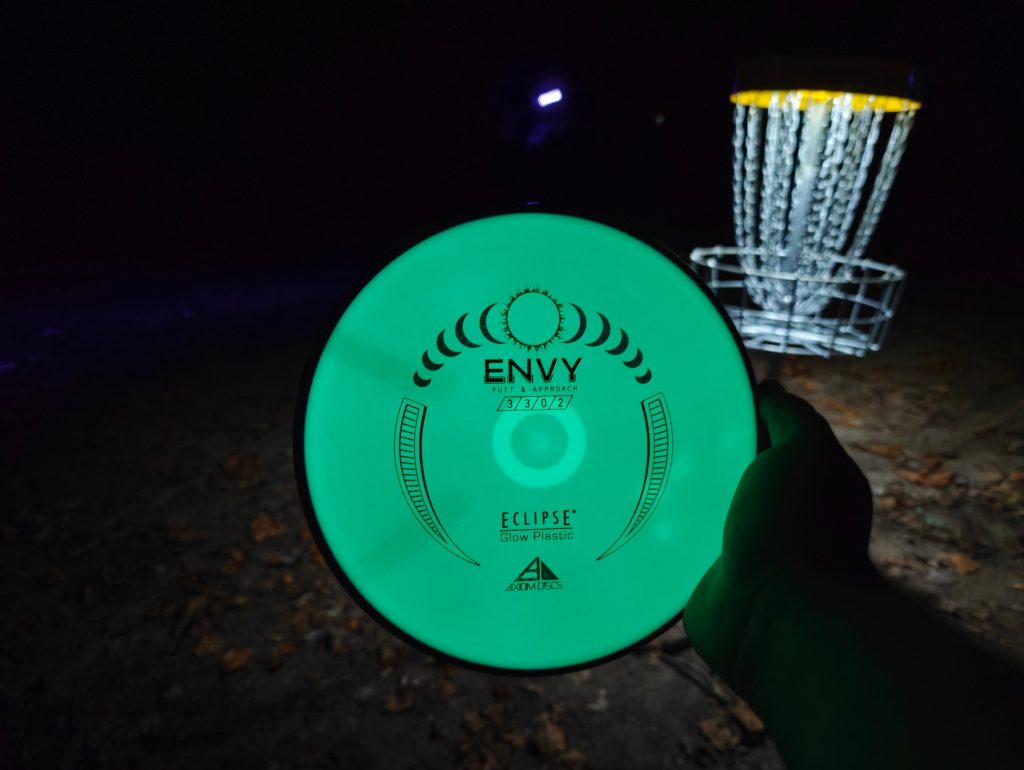




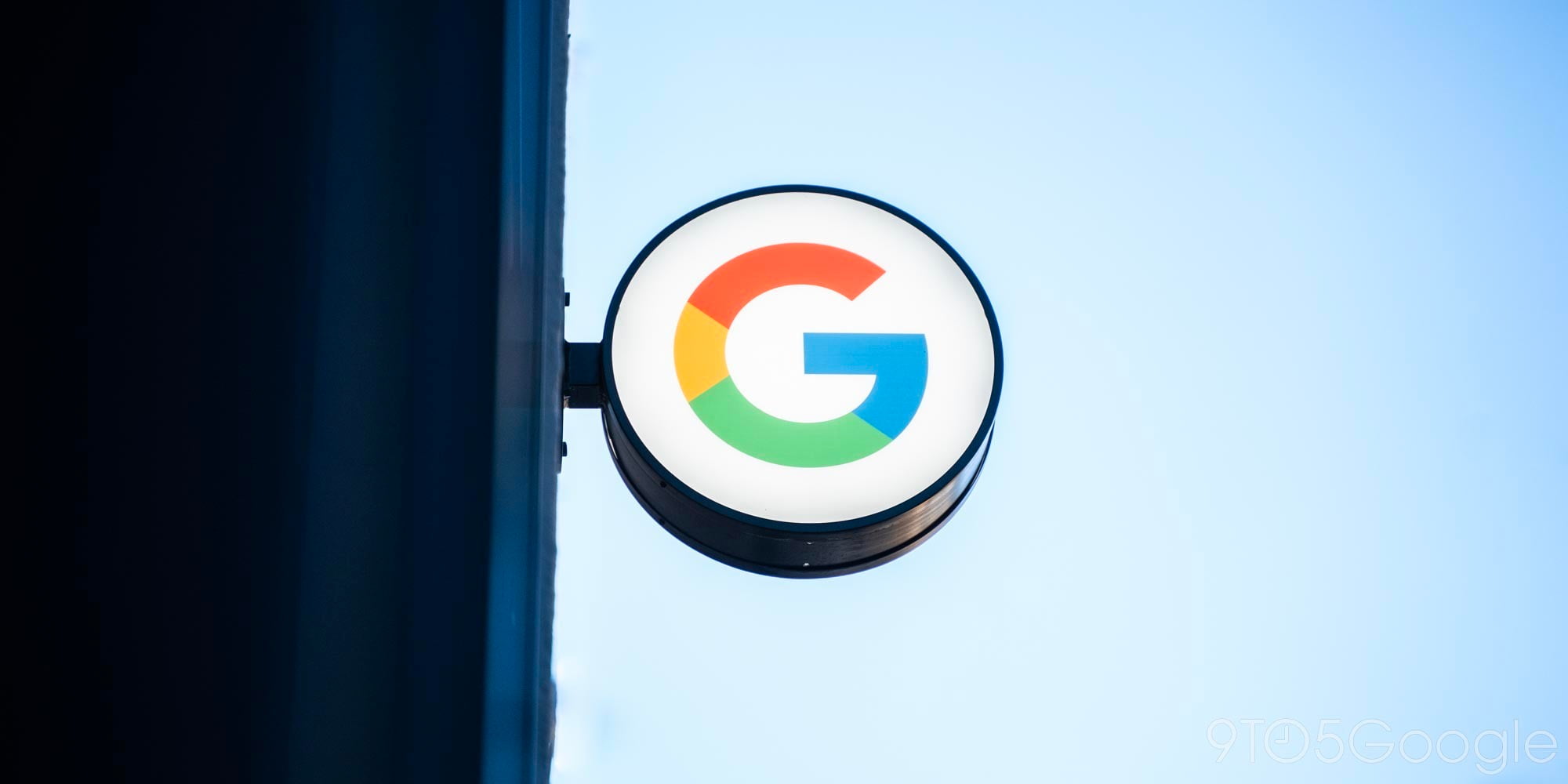

Comments